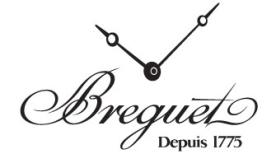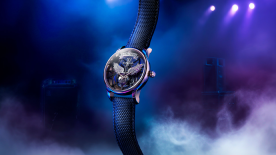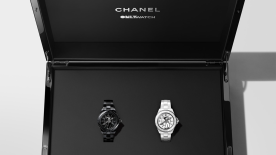We’re at the end of March, which has been a month dedicated to women, not just on WorldTempus, but all around the world. Two weeks ago, we went all the way back in time to talk about one of the very first known human artifacts, which is assumed to be an early attempt at making a primitive calendar. One of the most compelling and plausible theories surrounding this object is that its creator was a woman. Last week, we discussed the minute repeater, known by lovers of watchmaking as the Queen of Complications, highlighting some of the most exceptional contemporary examples of this chiming mechanism. We’ve saved the most interesting discussion for the last — a speculative look at the future of feminine timepieces.
The future is written by the past; that much we know. One of the most consistent factors behind the drive towards better chronometry and timekeeping has been the need to make smaller watches. Examining the history of horological brands allows us to discover that this has been true ever since the wristwatch overtook the pocket watch as the main mode of timepiece construction. Smaller movements require more robust mechanisms, since their size makes them more vulnerable to shocks and other environmental influences. Small, but powerful, is the principle at play here. Brands such as Omega, with their 1955 Ladymatic — one of the very first automatic watches made especially for women — showed that feminine watchmaking pushes manufactures to expand the limits of their expertise in precision watchmaking.
Taking things from another angle, let’s try and address the question that seems to confound far too many watch brands, a question that comes up repeatedly no matter how many times women have tried to make their responses heard. What do women want from a watch? I don’t know why we have to keep answering this question. You know that annoyed tone of voice that you’ve come to expect from your mother, your wife, or your female co-workers when you ask them for the 150th time where the tin opener is, or where the passports are kept, or where the new printer cartridges are? You’ll hear that exact tone in the following paragraph.
Women want watches that offer the same consideration, variety and interest that they see in watches that are being made for men. Women want to be respected as customers and consumers, at the same level that they see male customers and consumers being respected. Women want to be heard, especially after they’ve told you repeatedly what they’re looking for, either directly as a verbal statement, or indirectly though what they purchase. Women want watch brands to stop treating them as one homogenous single-minded mass and start seeing them as individuals. (When was the last time you heard a brand say “men love” this, or “men love” that? And yet generalisations such as “women love diamonds” or “women love mother-of-pearl dials” or “women love curved case designs” abound in this industry. It’s frankly absurd.)
More than 10 years ago, the Harvard Business Review observed that women had overtaken men in driving the global economy, controlling over $20 trillion in annual consumer spending. Combine this with more recent studies tracking the skew in luxury consumption towards younger, female demographics, and the picture starts to become even clearer. Empirical and anecdotal evidence supports the theory that women are more crisis-resistant in their spending within the luxury sector, and that their values are more in line with the luxury industry than their male counterparts. Even within the micro-niche of consumer goods that is luxury mechanical watchmaking, we see that timepieces that are aimed at a feminine audience, although vastly fewer in number than conventionally “male” timepieces, also tend to be more colourful, more audacious — they allow for greater expressions of design creativity. We can cease our search for the one great solution that will ensure the continued survival of the mechanical watch industry. The next horological messiah is female.
Here’s one final fact that I’ve no doubt many of you would have heard before, but perhaps forgotten. Wristwatches began as timepieces for women. The first recorded wristwatch (and a complicated one, at that) was the Breguet 2639 made for Caroline Murat, sister of Napoleon Bonaparte, and Queen of Naples. Up to the early 20th century, wristwatches were primarily worn by women — men wore pocket watches. Of course, men subsequently realised that women had the right idea about personal timepieces and decided to co-opt the wristwatch; but let’s never forget who was there first.
Nothing I’ve said above is new. Everything is known. Why haven’t we put it together yet? The future of feminine mechanical watches is also the future of mechanical watches.






